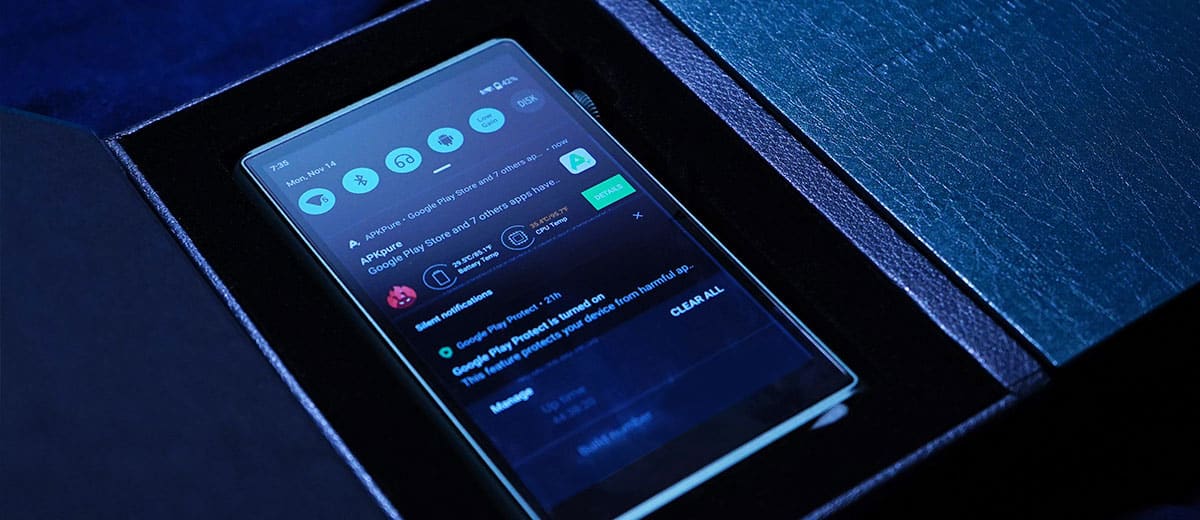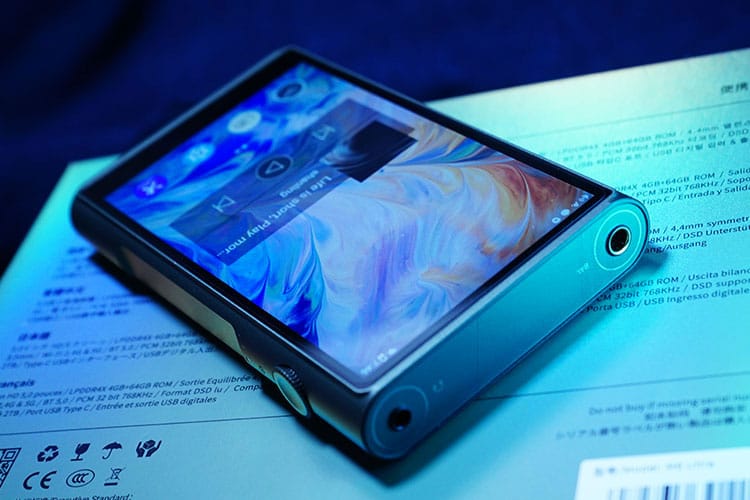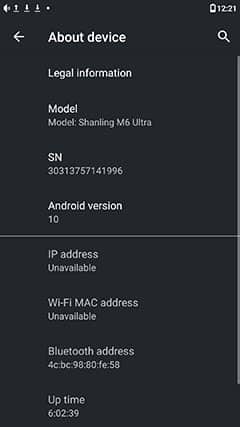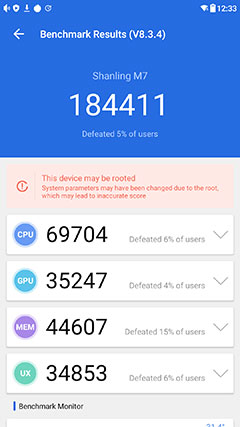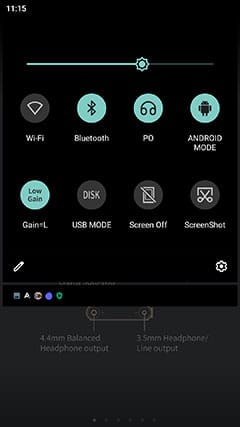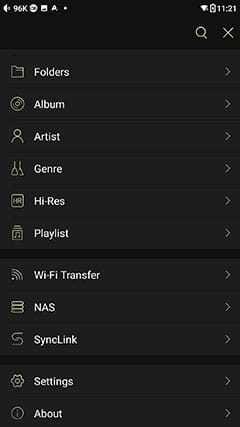Today, we review the Shanling M6 Ultra which is a quad-AK4493SEQ DAC Android 10 DAP capable of up to 720mW of balanced output power. It is priced at $919.99.
Disclaimer: This is a sample sent to us in exchange for our honest opinion. Headfonics is an independent website with no affiliate links or status. We thank Shanling for their support.
To find out more about Shanling products we have previously discussed on Headfonics click here.
Note, that this article abides by our latest scoring guidelines which you can read up on here.
Once again, Shanling revamps the M6 and brings to us the “M6 Ultra” version using Quad AKM AK4493SEQ DACs, with up-to-date system features such as the Snapdragon 665 SoC, 16x MQA unfolding, 18W fast charging, and a newly developed amping circuitry in a minimized flagship M8 styled housing.
That is not the best part yet, Shanling’s rich and nostalgic house tuning is in full swing on the M6 Ultra, marking this model as one of the fastest and most engaging sounding DAPs in the mid-fi market.

Tech Highlights
The system hardware configuration on M6 Ultra is very close to the M7, but the price goes slightly higher than the previous generations of the M6. However, we are getting a mouthwatering list of hardware upgrades that looks very promising on paper.
DAC
For the decoding circuitry, 4 pieces of Asahi Kasei Microdevices’ AK4493SEQ 32-bit DAC with ‘VELVET SOUND’ technology with a total of 8 channels are used to decode data up to 768kHz for PCM also DSD512.
Shanling explained that the DAC circuit design takes reference from their CD players, and they are maximizing the output quality on the balanced circuitry.
Around the DACs two Daiwa Shinku Kogyosho (KDS) active crystal oscillators from Japan are installed to bring down jitter and enhance the time-domain accuracy for higher output quality.
Amplifier
The redesigned, fully balanced amping architecture is accompanied by a Texas Instrument OPA1612 and OPA2211 for each channel, also the LTA8092 op-amp as seen on Shanling’s recently released EC3 top loading CD player.
The high-speed buffer BUF634A from Texas Instruments is on board as well and Shanling remarked that the choice of parts is to achieve a relaxing signature with a hint of warmth that follows the path of the M8 and the AKM-based M6 and M6 Pro.
Performance Numbers
Responding to competition Shanling pulls outs even more power than on the previous M6 releases, attaining 240mW into a 32Ω load on SE output and 720mW@32ohm balanced 4.4 output. The power-on balanced connection would allow it to drive pretty much all earphones in the market as well as some full-sized cans.
The total harmonic distortion is measured at 0.0005%, even lower than M7’s 0.0007%, and it scores 125dB S/N and dynamic range on its balanced output which is very decent.
On the other hand, the Output Impedance is below 1Ω which suggests that the M6 Ultra can be paired with very sensitive IEMs and custom IEMS without compromising the dynamics.
Design
The M6 Ultra follows the design language of the M8. The screen-to-body ratio is cleverly enlarged by an elevated area that allows fitting a fully laminated 5-inch, Sharp Full-HD panel that can go very bright.
On the right-hand side of the player, we have the signature scroll wheel that is positioned just in place for easy volume adjustment, this is quite handy and playback functions can be controlled by one hand at ease.
Shanling has always given me a mature and industrial impression and their latest addition of glass panels on the sides of the player chassis is amazing. While the M6 Ultra is professional in terms of design and machining, the matte racing green finish steps up the whole feel and class of the design, and M8 now looks boring.
Turning to the bottom end of the player there are silver imprints on the inner side of the glass insert that label the USB port and the microSD card slot with a dust cover. These small details are well executed to further brush up the design.
The rest of the button layout is pretty intuitive and the navigation buttons support various playback control functions upon double-clicking, you can feel the buttons being nicely machined and the feedback when clicking is clean and firm.
I/O
The M6 Ultra packs in 3.5mm and 4.4mm Balanced outputs and the jacks are arranged on the top of the player. Apart from the analog outputs the M6 Ultra can also output digital signal via its USB C port but it doesn’t support or come with a COAXIAL converter cable.
Besides the wired connection, the M6 Ultra can be hooked to a NAS and playback over DLNA and Airplay, this would be more convenient and connecting fast if your home setup supports it.
Packaging & Accessories
Shanling has designed professional packaging in racing green, the same as the body color of the player. Take off the sleeve and you will find a nicely designed gift box that opens both sides, revealing the DAP unit and accessories including the charging cable and screen protectors.
Inside the compartments, you will also find quick start guides and a warranty booklet. If you are too bothered to read through them and want to come back to the instructions later, you can always check it in the tech support application on the bottom menu.
Software
Android 10
With Android 10 onboard and possibly the fastest hardware in the game, the UI experience is as smooth as you can imagine and the whole interface is customed for music playback functions.
Of course, Shanling puts in their AGLO (Android Global Lossless Output) technology which allows global lossless output without being degraded by SRC and users can enjoy the player’s full output quality with any application.
You can check for the latest firmware by pressing the Tech Support icon on the bottom bar and Shanling will keep enhancing the performance of various functions and fix bugs reported by users from time to time.
Performance Benchmarking
Testing with AnTuTu v8.3.4 before loading in any songs and installing any other applications, the M6 Ultra scores 175240, this is slightly lower than the M7 mainly because of less RAM.
However, the overall score is on par with players like M17 or the Hiby R8. Such ensures high framerates with videos and minigames that are not very graphic intensive.
Navigation
Unless you have really small hands, the M6 Ultra’s 5-inch screen size is just right for single-handed control. The button layout allows users to easily reach the physical buttons no matter if they are a left-hander or a right-hander.
Key functions are easily accessible from the drop-down menu and swiping action between different screens is very swift as powered by the fast Snapdragon 665 controller.
Features
Preinstalled with Shanling Music App, the M6 Ultra provides a professional playback interface with visual features like a VU meter that moves with the output level. Inside settings, there are also some customizable features like theme color and automatically matching lyrics.
Synclink
In addition, the app supports Shanling’s Synclink function allowing you to remote control the player with a phone that has the same app installed. Be reminded we have open Android on board so you are free to install any music application and there are always nuances in output quality and tuning to be discovered.
Streaming
Aside from the above features the M6 Ultra supports streaming to home setups by connections via NAS, DLNA, and Airplay.
You may find it more versatile and convenient than traditional CD players or a turntable with various tuning and filtering features on board and it is recommended to stream over LDAC which has the highest transmitting quality.
The M6 Ultra also works the other way around as a Bluetooth receiver so you can listen to what is being played on your PC or phone by connecting to it just like a TWS headset.
Media Management
The M6 Ultra doesn’t take more than a minute to scan through my card with 50+ albums/ 500+ songs and some files that can’t be indexed for example DXD, ISO files can be viewed and played using the folder mode.
With 4GB of ram inside and a rather strong controller the M6 Ultra has a short loading time and operates very smoothly across different kinds of applications.
Wireless Connectivity
The M6 Ultra is Hi-Res Audio Wireless certified and supports DLNA and Airplay. The Airplay icon is not placed on the drop-down menu so you will need to access the settings and find it at the bottom, then the connection is instant.
To connect to your NAS and access over Wi-Fi your home library you can access the searching NAS function in the Shanling Music app and follow the instructions.
Bluetooth
With Bluetooth 5.0 onboard the M6 Ultra supports LDAC, aptX HD, and SBC and can receive LDAC and SBC signals.
If you are listening to music, you may not notice any latency and when watching videos on the player and streaming audio to speakers, lip-sync is slightly off but pretty much all other players suffer from the same issue.
As for the range, when connected to my final ZE3000 it is very stable over a few meters. With other LDAC-capable receivers, I can stream high-resolution music over the living room and move around without the signal dropping.
Wired Connectivity
USB-DAC
The USB Decoding mode is accessible from the drop-down menu and the output quality and tonality are similar to local file playback. Depending on your setup you may need to download a driver for Windows playback through universal driver 2.0 should give you instant compatibility.
USB-OTG
The M6 Ultra supports connecting to dongles and other USB DACs via its USB-C port. Alike using android phones, you may need UAPP or other apps with USB drivers supporting the dongles or decoders.
Sound Impressions
Summary
Let alone the much faster system speed compared to the older gen M6(s), the M6 Ultra possesses 4 AKM DAC chips for decoding which is derived from Shanling’s well-recognized CD player designs which use 4 DAC chips in parallel to achieve higher current output and SNR.
This gives the M6 Ultra some edges in terms of technicalities compared to the previous generation M6s, and it sounds very engaging. I have a constant déjà vu feeling reminding me of the original M6’s signature but with much better transient performance and resolution.
The M6 Ultra has a lovely, nostalgic coloration in the mids that said I can relate to the earliest M6. This time the stronger components add much more texture and dynamics to the music and it feels like a blend of the M6 Version 21, M6 Pro 21, and M8.
Guessable from the spec sheet the balanced output is much stronger than the single-ended output, it is recommended to use the balanced-out on the M6 Ultra to achieve the best separation, output power, and dynamics. The below impressions are based on the balanced output after roughly 100+ hours of burn-in on the player.
Timbre
While Shanling claims that the design has referenced their legacy CD players, I am surprised to find out that the output does have some resemblance to a retro tuning.
The M6 Ultra is tuned to be M-shaped that brings out the body of bass instruments as well as the vocal overtones, reminiscence of City pop, bar Jazz, strong vocal effects, and a punchy soft bass from the 70-80s.
The so-called house tuning of Shanling is very enjoyable on the M6 Ultra when the resolution and articulation are enhanced from the original M6 as well as M6 Pro 21. Now there is a much stronger sense of control with a more refined treble performance.
Even with the added warmth, the vocals are naturally delivered with a stereophonic image. A great balance is achieved between resolution and coloration, while the tonal character is distinct it doesn’t feel leaned as the previous generation products.
The bass on M6 Ultra doesn’t sound as deep as the M7. However, it has good punching power, density, and an elaborate decay. Together with prominent vocal overtones, it helps to authorize darker voices with strong energy and presence. However, lighter voices that cross the mid-range frequencies may sound slightly distanced due to the M-shaped signature on the M6 Ultra.
The overall output is naturally delivered and well-articulated with good air. The fullness in the mid-bass and the forwardness in the upper frequencies are particularly soothing for old jazzes with saxophones also pops from a few decades ago. It can keep you listening for hours.
Staging & Dynamics
The newer hardware configuration has brought to the M6 Ultra a better perception of depth and openness. There is also a stronger sense of control throughout the mids and the treble.
The midrange frequencies are swiftly presented to space the vocalist from the listener, enhancing transparency and allowing more of the backing instruments and their overtones to come into the picture. This gives more attention to the instruments interreacting behind and favoring EDMs and Classical music.
In the fairly expanded soundstage presented, transient tones aren’t strongly boosted. However, the tuning direction rewards the M6 Ultra’s decent dynamics and a soothing vibe so it doesn’t feel confined.
Click on page 2 below for sound impressions, pairings, and our select comparisons.

